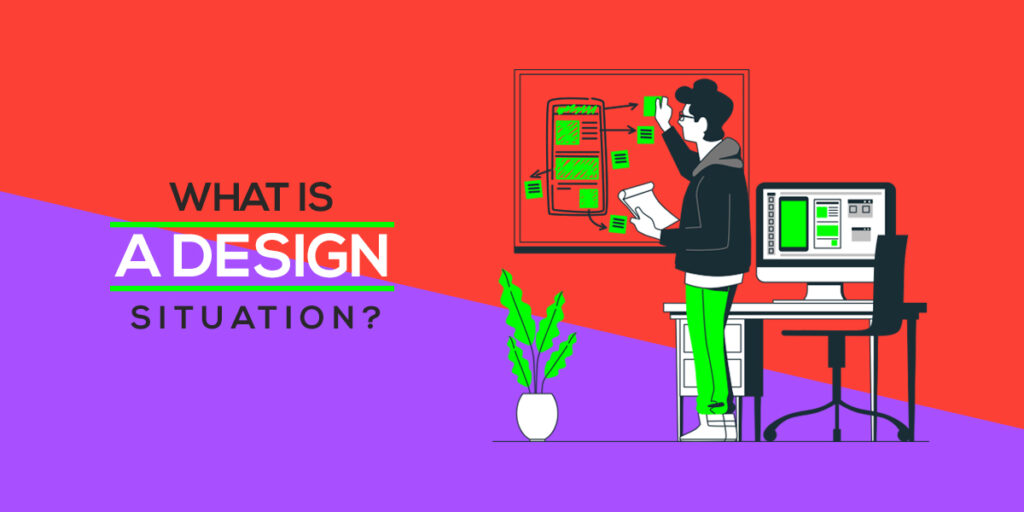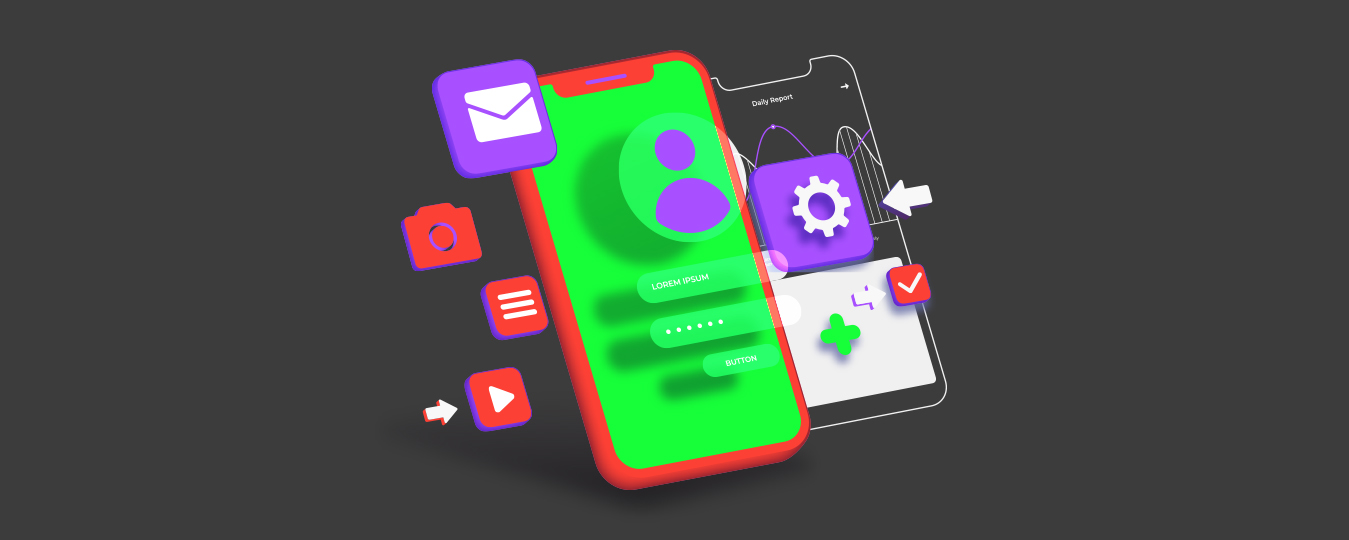What is a Situation?
The Cambridge Dictionary defines ‘situation’ as the set of things that are happening and the conditions that exist at a particular time and place. In simpler words, a situation is a real-world circumstance in the context of a specific event.
What is a Design Situation?

Similar to a situation, a Design Situation is a description of a real-world object, space, or interface in its ‘as-is’ state, complete with its extent of imbalances or imperfections.
What is the Significance of a Design Situation?
A design situation is a gateway to a successful design. For instance, let us say we wish to design a water bottle. While it is fairly easy to draw 100 different designs on paper or any design software that you might be using for something as simple as a water bottle, how many of these 100 designs will actually solve a real-life purpose? Well, this is a question that can be answered by contemplating the design situation from the very beginning. To do so, we must first have a clear picture of the actual circumstances in which the bottle will be manufactured and used. This will involve pondering upon the following aspects –
- The material of the bottle
- The weight of the bottle
- The water holding capacity of the bottle
- The way in which the bottle can be made leak-proof
- The ease of handling the bottle by children, and by adults
- The durability of the bottle
- The anticipated price of the bottle
- The quantum of production
- The supply chain to be used for its distribution

Only when due diligence has been given to each of the above facets and more, can a design team get close to drafting a design that not only solves the basic premise of creating a ‘water bottle’ design but is also in line with the real-world expectations from the product.
Needless to say, any design that has undergone this arduous yet promising process of understanding, assessing, and resolving the design problem will largely benefit from the same. In fact, such a design intervention will often be much more successful in comparison to a design that doesn’t take a design situation into consideration!
As you might have understood, one of the most prominent aspects of a streamlined design situation involves the study of the environment – whether on the ground or online – where the design will supposedly be used.
More often than not, it isn’t the aesthetic or the adherence to design principles that are responsible for the success of the design, but the design’s ability to solve the woos of the customers while enabling the users to achieve more than they thought they wanted of it.
How to Model Design Situations?
Now that we know the importance of a design situation, let us go ahead and decipher how to precisely model a situation such that the resultant design is based on a significant chunk of relevant information.
And how do you get your hands on this ‘relevant information’? Well, by conducting research! In fact, elaborate research. For what it’s worth the research pertaining to situation modeling involves as many as 5 distinct stages as noted under –
Design Situation: Preliminary Research

This is the first stage, wherein every member of the design team is concerned with just one question – “What is the current situation?”
The subset of this question may involve –
Whether the product/service/space or interface already exists? If yes, what are its pros and cons? If no, why not? Whether it is viable from a design perspective? etc.
Preliminary Review

As the name indicates, this stage is all about collating and reviewing the information gathered during Preliminary Research. The team documents all the information so that everyone has access to the same, and discusses what each of them has come to understand up until this point!
Design Situation: Targeted Research
Next, on the basis of the preliminary review, the team works on curating a new range of more specific questions pertaining to the situation. After they document the new set of questions, they set out for a more targeted study of the design project.
Design Situation: Deep Research
Upon asking the detailed questions as indicated in step 3, the team captures certain answer patterns, based on which it will then conduct deeper research.
Design Situation: Research Analysis

Now that all the customer-facing stages are complete, the team gathers to understand the results of the Targeted as well as the Deep Research. The resulting information is then synced into yet another document for all to have access during the designing process.
As you may have understood, this elaborate research enables the team to understand and address any existing design problem, while also deciding on a new path that can help eliminate these problems thereby facilitating the creation of a design brief that is complete and reliable in all aspects.
While the document for the design situation will be more than helpful, it can always be an added advantage to have some diagrammatic representations of the same.
All said and done, quite often, as designers, we come across a design task with a limited scope, wherein we simply cannot deploy the tools and other resources for the requisite research. In such cases, it is recommended that we simply describe the situation in a way that is simple to decipher complete with relevant insights regarding the utility, functionality, pros, and cons of the design as well as the needs of the intended consumer. Not only will it help the client to understand the design intent better, but will also ensure that the designing process is aided by these insights.
The Yellow Slice Take On Design Situation
We hope that you now have all the information you could possibly require while writing a design situation either for the client or for your own company. While the design situation will prove to be beneficial at every step of the way, make sure to stay flexible in your approach since there is a possibility that the situation undergoes a radical shift from the time you conduct the research to the time when you actually formulate the design process!
FAQs About Design Situation and Design Brief
What are the steps in a design project?
Some of the most prominent steps in a design project include –
- Defining the problem
- Collecting the information as well as design ideas
- Brainstorming ideas
- Developing solutions
- Gathering feedback
- Improving the design
What are the benefits of drafting a design situation?
There are many benefits to creating a design situation document, including –
- Creating the foundation for an innovative design solution
- Expanding the design thinkers‘ knowledge
- Foreseeing any underlying new design problem
- Prioritizing the needs of the client and customer




